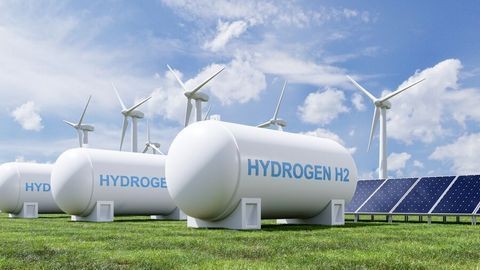Further Federal Action on Government-Wide Sustainability Goals
Client Alert | 2 min read | 09.07.22
On August 31, 2022, the White House Council on Environmental Quality (“CEQ”) released instructions to federal agencies for implementing Executive Order (“EO”) 14057 Catalyzing Clean Energy Industries and Jobs Through Federal Sustainability. As we have covered previously, EO 14057 identified ambitious sustainability goals for federal agencies, including:
- 100 percent carbon-free electricity by 2030;
- 100 percent zero-emission vehicle fleet by 2035;
- net-zero emissions building portfolio by 2045;
- 65 percent reduction in Greenhouse Gas (“GHG”) Scope 1 and 2 emissions from Federal operations; and
- net-zero emissions from federal procurement, including a “Buy Clean” policy to promote use of construction materials with lower embodied emissions.
In furtherance of EO 14057, CEQ urges federal agencies, among other initiatives, to “pursue procurement vehicles, including pilot projects . . . that target categories of significant agency spending or have the greatest potential to impact emissions or climate risk.” This includes recommending that agencies utilize government-wide and shared acquisition vehicles, such as government-wide acquisition contracts (“GWACs”), indefinite delivery/indefinite-quantity (“IDIQ”) contracts, multiple award schedule(“MAS”) contracts, and blanket purchase agreements (“BPAs”) that already include sustainability requirements.
Agencies are also encouraged to “seek information on life-cycle carbon emission and related economic costs . . . of procured products and services” and to establish programs “that incentivize contractors to account for and reduce emissions and climate risks.” CEQ is further instructing agencies that in conducting competitive procurements, “best value” should be based on “determinations on full life-cycle costs, including measurable costs of environmental impacts in all phases of the product or service life cycle, where possible” and that price should be deemed unreasonable “only when the total life-cycle costs . . . are significantly higher for the sustainable product or service than for the non-sustainable product or service.” Other procurement priorities for agencies include reducing reliance on single-use plastics and PFAS-containing products, and incorporating Environmental Justice considerations into agency procurement by “determining whether materials are being created, sourced, or procured in a manner that disproportionately and adversely affects communities of color and low-income populations.”
As the Government continues to drive the implementation of these sustainability measures across all agencies, federal contractors should follow these developments closely as these measures may impact the type and cost of a broad range of goods and services that the Government procures.
Contacts
Insights
Client Alert | 2 min read | 12.19.25
GAO Cautions Agencies—Over-Redact at Your Own Peril
Bid protest practitioners in recent years have witnessed agencies’ increasing efforts to limit the production of documents and information in response to Government Accountability Office (GAO) bid protests—often will little pushback from GAO. This practice has underscored the notable difference in the scope of bid protest records before GAO versus the Court of Federal Claims. However, in Tiger Natural Gas, Inc., B-423744, Dec. 10, 2025, 2025 CPD ¶ __, GAO made clear that there are limits to the scope of redactions, and GAO will sustain a protest where there is insufficient evidence that the agency’s actions were reasonable.
Client Alert | 7 min read | 12.19.25
In Bid to Ban “Woke AI,” White House Imposes Transparency Requirements on Contractors
Client Alert | 5 min read | 12.19.25
Navigating California’s Evolving Microplastics Landscape in 2026
Client Alert | 19 min read | 12.18.25
2025 GAO Bid Protest Annual Report: Where Have All the Protests Gone?




